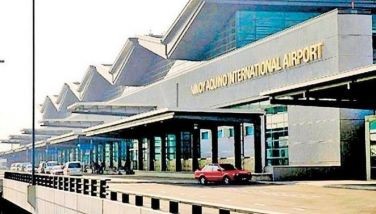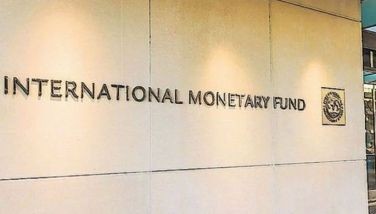Phl economy showing signs of fatigue – HSBC
MANILA, Philippines - The Philippine economy is showing signs of fatigue but is likely to recover in 2015, British bank HSBC said in its latest Asia Economic Quarterly Report.
It noted that after eight quarters of above six percent growth, “the economy is showing signs of fatigue.”
“First quarter 2014 GDP (gross domestic product) slowed to 5.7 percent from 6.3 percent in fourth quarter 2013. Sluggish government spending, reduced inventories and slowing household expenditure were the main reasons,” it noted.
Based on its latest forecasts, HSBC said the country’s GDP growth will narrow down to 5.9 percent in 2014 from 7.2 percent in 2013 and recover anew in 2015 to 6.1 percent.
On the supply side, low agriculture production dragged down output, reflecting the lingering effects of Super Typhoon Yolanda, it said.
It noted that growth indicators show that GDP momentum will likely decelerate further in the second quarter this year.
In April, public spending contracted, and both remittances and exports decelerated more than expected.
“We expect Q2 growth to slow further to 5.6 percent, taking the full-year forecast to 5.9 percent in 2014,” it said.
It said supply-side constraints are holding the Philippines back from sustaining above seven percent growth rates.
From rice to electricity, more production is needed to keep up with rising demand. In the medium and long term, more investment into agriculture production, electricity generation and transport infrastructure, among others, HSBC said.
Other sectors are showing signs of fatigue as well, according to HSBC.
It said the industry sector, in particular, slowed significantly, with manufacturing decelerating to 6.8 percent from 12 percent in the fourth quarter of 2013.
“Services were sticky, thanks to steady inflows of remittances. The sector rose 6.8 percent in first quarter of 2014 from 6.7 percent in fourth quarter of 2013,” it said.
It noted that investments in the Philippines are rising, contributing more to growth.
However, HSBC said it is still not enough to make up for the depreciation of capital and rising population growth.
“Improving sentiment concerning the Philippine future prospects will boost investment in the coming years. But investment is still below the saving rate, which means the Philippines has excess funding in the financial system,” it said.
“Most investment is domestic in nature as foreign direct investment inflows tend to be low, especially in comparison to its neighbours. Portfolio inflows are volatile and not sticky enough to depend on for development purposes; in the first quarter, the Philippines experienced net outflow of capital,” it added.
It also warned that negative supply shocks would likely drive prices higher.
“Headline inflation shot up in May to 4.5 percent from 4.1 percent in April, due to higher food and housing prices. In the coming months, headline inflation should reach even closer to the upper bound of the central bank’s three to five percent inflation target range, thanks to the recent fare hike for jeepneys and likely higher food prices,” it said.
It noted that “history also shows that the BSP raises rates when inflation reaches the upper end of the inflation target.”
“We believe the BSP, thus, will have no choice but to tighten monetary conditions soon to temper inflationary pressures,” HSBC added.
“The central bank already raised the reserve requirement ratio by two percentaghe points to 20 percent. The central bank raised the special deposit account (SDA) rate by 25 basis points to 2.25 percent. We expect two more 25 bp hikes of main policy rates and one more 25 bp of the SDA rate in H4, with the first policy rate hike likely to occur on July 31, 2014,” it pointed out.
- Latest
- Trending































